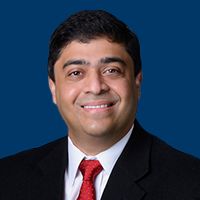Commentary
Article
Tovorafenib Offers an Efficacious Option for R/R BRAF-Positive Pediatric Low-Grade Glioma
Author(s):
Sarah ES Leary, MD, MS, details the significance of the FDA-approval of tovorafenib for patients with relapsed or refractory BRAF-positive pediatric low-grade glioma.
Sarah ES Leary, MD, MS

Tovorafenib (Ojemda) has entered the pediatric glioma therapeutic landscape as the first FDA-approved systemic therapy for the treatment of patients with pediatric low-grade glioma with BRAF rearrangements, including fusions, and in the future the agent may have potential to move from the relapsed/refractory setting to earlier lines of treatment, according to Sarah ES Leary, MD, MS.1
“It has become a very good option and one of the first standard options for this type of tumor for pediatric patients to receive oral therapy. The next question and one of the subjects of an ongoing study that’s coming next is whether it might become the first option that one considers,” Leary said. “This approval is for tumors that have already grown back after standard therapy but for some children considering their individual features, [giving the agent in the first line may make sense]; there’s a trial ongoing now that may answer that question about how it compares as first-line [therapy].”
Findings from the phase 2 FIREFLY-1 trial (NCT04775485), which supported the accelerated approval of the highly-selective type II RAF kinase inhibitor, revealed that patients who received tovorafenib (n = 76) achieved an overall response rate of 51% (95% CI, 40%-63%) with a median duration of response of 13.8 months (95% CI, 11.3-not estimable). Additionally, 85% of patients experienced a response for at least 6 months, and 23% experienced a response for at least 12 months. The recommended dose of the agent based on body surface area is 380 mg/m2 orally once weekly and the maximum recommended dose is 600 mg given orally once weekly. However, patients in FIREFLY-1 were treated with doses of the agent ranging from 290 mg/m2 to 476 mg/m2.2
In an interview with OncLive®, Leary, an attending physician and medical director of the Pediatric Brain Tumor Program in the Cancer and Blood Disorders Center at Seattle Children’s Hospital, in Washington, detailed the clinical considerations with tovorafenib and how the agent may impact the treatment paradigm for pediatric patients with low-grade glioma. Leary is also a professor of Pediatrics at the University of Washington School of Medicine and an associate of the Fred Hutchinson Cancer Research Center.
OncLive: What is the significance of the FDA approval of tovorafenib?
Leary: Pediatric low-grade gliomas are the most common tumors that we see in children. They are considered benign, but we believe that word is not appropriate when something is in the brain because it’s an essential part of how we function. Low-grade glioma can be life threatening, and there were no FDA-approved medical therapies for low grade glioma until tovorafenib—it’s the first drug to ever apply for FDA approval for this disease.
During the course of my career, we’ve [gained] a much better understanding of the biology of pediatric brain tumors, and it is typical to make a diagnosis not only by the histology, but by what genes are mutated. Pediatric low-grade glioma is a relatively simple disease molecularly and [is] generally driven by [genetic alterations in the RAS/MAPK] pathway—tovorafenib inhibits [a key enzyme in the MAPK signaling] pathway.
What was the rationale and design of the FIREFLY-1 trial?
The main group of patients who were enrolled and for which the FDA approval is indicated for is children with recurrent low-grade glioma. These patients have already had traditional therapy and their tumor has not responded sufficiently or has come back after receiving first-line therapy.
There are [many] children [who have recurrent disease] because low-grade glioma can be a very chronic disease of childhood if the glioma occurs as it commonly does in a location in the middle of the brain, which is not surgically resectable; then patients can be on and off medical therapy throughout childhood. Eventually, most patients do very well [on treatment and] our focus is on preventing the tumor or the treatment from causing any long-term adverse effects [AEs].
This trial is a good example of successful collaboration between industry and academic, to work together to run the best trial to hopefully bring the best new therapy to children with specific diseases who might benefit.
What were the key efficacy findings from this trial?
Most patients on the trial in the low-grade glioma group benefited from being treated with tovorafenib. The benefit is seen in different ways, including [regarding] the size of the tumor but more importantly the function [of patients]. Key functional data collected were [on] visual function for children who have tumors in the optic pathway, which is a common location for low grade glioma to occur, and it can result in visual impairment even complete blindness if the tumor is not controlled. It was important to see the effect on preserving visual function and not just the way the tumor looks but what it’s doing, and more importantly what the healthy brain and nervous system are able to do.
What is key to note about the safety profile of tovorafenib?
This was the second trial to collect safety information and FIREFLY-1 was a larger trial than [the] initial [phase 1 PNOC014 (NCT03429803)] academic trial. Similar to other types of BRAF inhibitors, where the drugs appear to be well tolerated, our field is becoming more expert at participating in these trials and then hopefully through prescribing the drug [and] managing AEs [we’ll learn more]. But [BRAF inhibitors] are very different than traditional chemotherapy, there’s a focus on skincare and rash prevention and in general with good preventive care children tolerate the medicines quite well.
It is very nice to see [tovorafenib] as an option for therapy [as] this is an oral medication with a once-a-week schedule; that’s very different from some of the traditional intravenous chemotherapy options that we use for these tumors.
Are there any patients for whom you would hesitate to use tovorafenib?
The way the agent has been studied so far, and this is one of the challenges in general with targeted therapy, is for children with specific mutations. We would be very thoughtful about the potential risk of using it in children where we don’t have that mutation information, and that’s another part of this revolution of therapy in our field—it becomes essential to know not just the histologic appearance [of] the tumor, but the molecular [profile]. It’s a very important part of our field to make sure that children across the world have access to precise testing.
References
- FDA grants accelerated approval to tovorafenib for patients with relapsed or refractory BRAF-altered pediatric low-grade glioma. FDA. Updated May 22, 2024. Accessed May 23, 2024. bit.ly/4axx5uo
- Ojemda. Prescribing information. Day One Biopharmaceuticals, Inc; 2024. Accessed May 23, 2024. bit.ly/4bOQRTo








